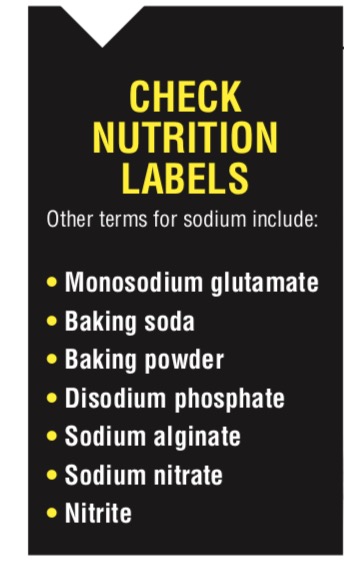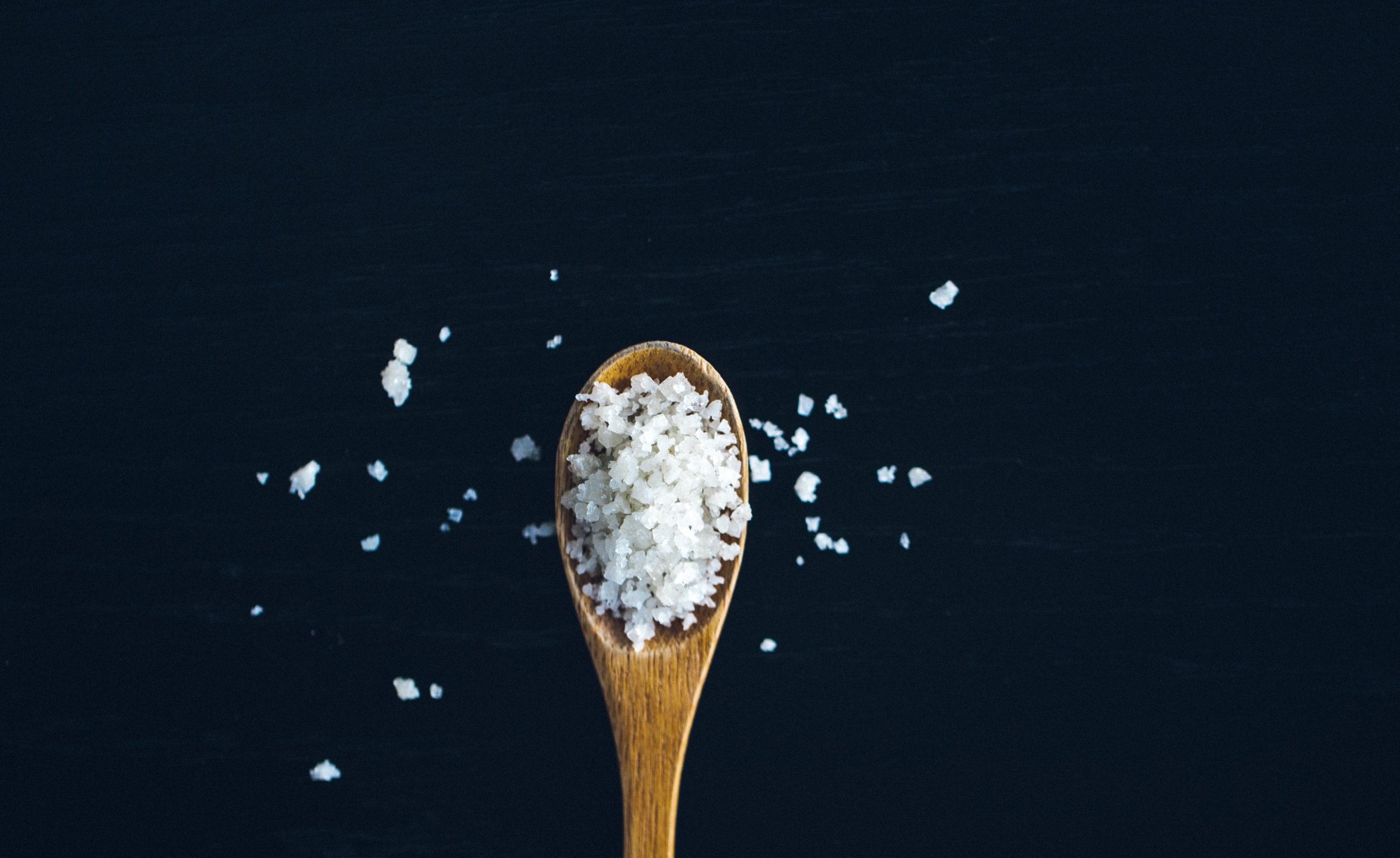A shake of the salt here, a shake of the salt there—we all know that salt makes food taste better, but how much salt is too much? According to the American Heart Association, adults should consume no more than 2,300 milligrams (mg) a day, and ideally no more than 1,500 mg per day. More than 70% of the sodium Americans eat comes from packaged, prepared and restaurant foods and not the salt shaker. That means many people aren’t aware of how much sodium they are actually ingesting.
Sodium is actually very necessary for functions in everyday life because it maintains the right balance of fluids in your body, aids the transmission of nerve impulses and helps in the contraction and relaxation of muscles.
However, on average, Americans eat more than 3,400 milligrams of sodium each day, which is much higher than the recommended amount. To figure out how much sodium you are taking in each day, check your nutrition labels for items like sodium, salt and soda. Other items to look out for on labels include monosodium glutamate, baking soda, baking powder, disodium phosphate, sodium alginate, and sodium nitrate or nitrite.
Cutting back on sodium levels can vastly improve blood pressure and cardiovascular health. Elevated blood pressure can cause damage to blood vessels and arteries, which can increase risk of heart disease, stroke, heart failure and kidney disease. High salt intake is also linked to conditions like kidney problems and kidney stones, fluid retention and osteoporosis.
What are the biggest sources of sodium in our diets? Processed and prepared foods account for most of it which includes white bread, cold cuts, bacon, cheese, soups, pizza, French fries, fast foods and prepared restaurant and frozen dinners. The average amount of sodium in dishes among the biggest restaurant chains is about 1,256 milligrams, which is more than half of the recommended daily sodium intake. For example, Chili’s Southern Smokehouse Burger packs 4,470 mg of sodium in one meal.
One way to control your sodium is to prepare more meals at home so you control how much salt is added to your food. Use whole food ingredients like low-fat and low-sodium proteins, whole grains, fruits and vegetables. Instead of using salt to flavor meals, use low-sodium ingredients like fresh herbs, citrus, roasted garlic, caramelized onion, fruit juices and homemade chicken stock. Foods with potassium—white beans, kidney beans, sweet potatoes, tomatoes, oranges and bananas— may help counter the effects of sodium.
Avoid buying processed foods in the supermarket, and if you have to, check nutrition labels carefully. When you do opt for packaged foods, choose products that are sodium free or low in sodium.
If you do choose to eat out, select dishes carefully. Do your homework—ask if there are any lower-sodium dishes on the menu and that salt not be added to your food. Get dressings and sauces on the side so you can add only as much as you need.
by Tracy Wright

